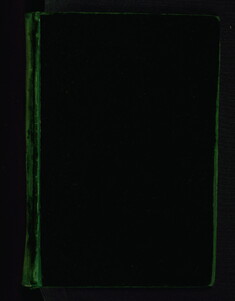Leaf from Psalter-Hours: Apes Dancing to Ring-around-a-Rosy
The song "Ring-around-a-Rosy" is still popular today, often danced in a circle just as we see the monkeys doing here. Yet this seemingly lighthearted song has a dark past. The plague swept Europe during the 14th century, and the song's words actually refer to its terrible symptoms: a circular rose-colored rash, sneezing or coughing, and finally, death. Flower petals were worn in a pouch around the neck to keep the smell of death away. The song, then, seems very different in this context.
Ring-a ring-o-rosies
A pocket full of posies
Achoo, Achoo,
We all fall down.
Provenance
Provenance (from the French provenir, 'to come from/forth') is the chronology of the ownership, custody, or location of a historical object. Learn more about provenance at the Walters.
Jacques Mauze (?), 15th century [1]. Ex libris Crouzon, 17th or 18th century [2]. G. E. Street, 19th century [3]. Léon Gruel, Paris, late 19th-early 20th century [4]; purchased by Henry Walters, Baltimore, early 20th century; by bequest to Walters Art Museum, 1931.
[1] inscriptions on fols. 167r and 213v (the latter now erased)
[2] inscription on 1r
[3] inscription on 1r
[4] No. 46 on 1r
Exhibitions
| 2010 | Checkmate! Medieval People at Play. The Walters Art Museum, Baltimore. |
| 1984-1985 | Illuminated Manuscripts: Masterpieces in Miniature. The Walters Art Gallery, Baltimore. |
Geographies
Belgium, Ghent (Place of Origin)
Measurements
H: 6 3/8 × W: 4 3/8 in. (16.2 × 11.1 cm)
Credit Line
Acquired by Henry Walters, after 1894
Location in Museum
Not on view
Accession Number
In libraries, galleries, museums, and archives, an accession number is a unique identifier assigned to each object in the collection.
In libraries, galleries, museums, and archives, an accession number is a unique identifier assigned to each object in the collection.
W.82.193R



